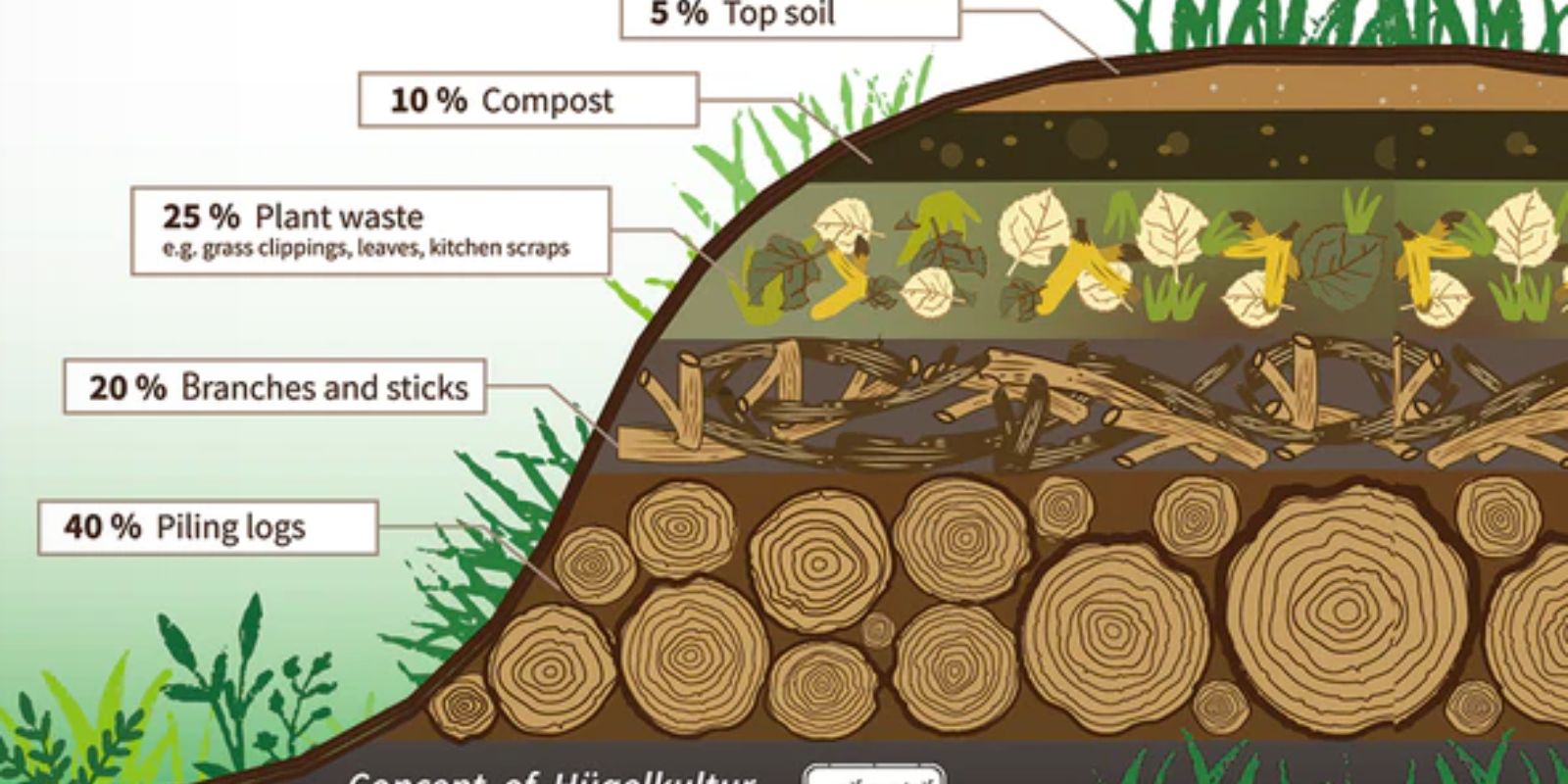Introduction
Hugelkultur, a German term meaning “hill culture,” is an innovative gardening technique that can transform your gardening experience. It involves creating raised beds using decomposing wood and other organic materials. This method not only helps to recycle waste but also provides a host of benefits for your garden, such as improved soil fertility, enhanced water retention, and a more sustainable growing environment. In this article, we will explore the step-by-step process of building hugelkultur beds and delve into the numerous reasons why this technique is essential for every gardener.
The Benefits of Hugelkultur
Before we get into the specifics of constructing a hugelkultur bed, let’s examine the key benefits that make this method so appealing:
- Soil Fertility: As the wood and organic materials decompose, they release nutrients into the soil. This process enriches the soil, promoting healthy plant growth.
- Water Retention: The decomposing materials in hugelkultur beds hold moisture much more effectively than traditional garden beds. This means less frequent watering is needed, especially in dry periods.
- Improved Drainage: The design of hugelkultur beds encourages excellent drainage, preventing waterlogging and ensuring that roots have access to oxygen.
- Extended Growing Season: The heat generated from decomposing materials can create a warmer microclimate, allowing for an extended growing season in cooler climates.
- Waste Reduction: Hugelkultur allows you to repurpose fallen branches, logs, and other organic waste, reducing the amount of waste sent to landfills.
- Enhanced Biodiversity: The varied structure of hugelkultur beds supports a diverse range of plants and beneficial microorganisms, improving the overall health of your garden ecosystem.
Step-by-Step Guide to Building Hugelkultur Beds
1. Choose the Right Location
Select a sunny spot in your garden with good drainage. Ideally, the site should have enough space for a raised bed of your desired size. Remember that the bed will settle over time, so leave room for this.
2. Gather Your Materials
You will need the following materials to construct your hugelkultur bed:
- Logs and branches: Start with larger logs for the base. Use fallen trees or branches that you can find in your yard or local parks.
- Twigs and smaller organic matter: Collect smaller branches, sticks, straw, leaves, and grass clippings.
- Soil: Use a mix of rich garden soil and compost to top off your hugelkultur bed.
- Optional materials: You can also include kitchen scraps, coffee grounds, and other organic waste to add nutrients.
3. Prepare the Site
Clear the area of any grass, weeds, or debris. You may want to dig a shallow trench or simply create a mound, depending on your design preference. If you’re building multiple beds, keep them at least three feet apart to allow for easy access and air circulation.
4. Create the Base Layer
Start by laying down the largest logs horizontally in your prepared area. Arrange them tightly together to form a sturdy base. This base will provide structure and support for the rest of the bed.
5. Add Smaller Materials
Layer smaller branches and twigs on top of the logs. This creates a network of materials that will facilitate drainage and aeration. Fill any gaps with additional organic matter, such as leaves, straw, or grass clippings.
6. Fill with Soil
Once you have created the layers, cover the entire structure with a generous amount of rich garden soil. Aim for a height of about 3-4 feet. As the materials decompose, they will settle, so don’t worry if it seems tall at first.
7. Shape the Bed
Use your hands or a garden tool to shape the bed into a gentle mound or hill. This not only improves aesthetics but also encourages better drainage. The sloped sides will help water runoff and prevent pooling.
8. Water Well
After shaping your bed, water it thoroughly. This helps to settle the materials and kickstarts the decomposition process. The initial watering is crucial for establishing moisture in the bed.
9. Allow to Settle
Give your hugelkultur bed a few weeks to settle before planting. This allows the materials to decompose slightly and will create a more stable environment for your plants.
10. Plant and Enjoy
Once your hugelkultur bed has settled, you can begin planting. Consider starting with hardy crops, such as tomatoes, peppers, or zucchini, which thrive in nutrient-rich soil. You can also interplant flowers and herbs to attract beneficial insects.
Tips for Success with Hugelkultur Beds
- Monitor Moisture Levels: While hugelkultur beds retain moisture well, it’s essential to monitor the water levels, especially in the first growing season. Adjust your watering schedule based on rainfall and temperature.
- Consider Companion Planting: Incorporate companion planting strategies to maximize your yields. Pairing plants that benefit each other can enhance growth and deter pests.
- Incorporate Mulch: Add a layer of mulch on top of the soil to further retain moisture and suppress weeds. Organic materials like straw, wood chips, or grass clippings work well.
- Rotate Crops: Practice crop rotation each season to maintain soil health and reduce pest and disease issues.
- Regular Maintenance: Check your hugelkultur bed regularly for signs of nutrient deficiencies, pests, or diseases. Adjust your care routine as needed to ensure the bed remains productive.
Conclusion
Hugelkultur is a transformative gardening method that offers numerous benefits, from improved soil fertility to reduced water consumption. By following the steps outlined in this guide, you can create a thriving garden bed that not only supports your plants but also contributes to a more sustainable environment. As you embark on this gardening journey, remember that every hugelkultur bed is unique, and with a little patience and care, you’ll enjoy a bountiful harvest for years to come.
Call to Action
Ready to elevate your gardening game? Start your hugelkultur bed today and experience the magic of this sustainable gardening technique! Share your journey and results with the gardening community using the hashtags below:

